Alan Bogana often finds himself between languages, cultural contexts, and disciplines, zones of translation that inspire his inter- and transdisciplinary artistic practice. His work engages with the natural sciences: specifically with physics – more precisely the study of light – and mineralogy. Bogana approaches scientific assumptions through the visual arts: encompassing pictorial representations of visible phenomena and the translation of an image based on one system of representation to another. These don’t result in illustrations of scientific processes, rather in critical commentaries on the way science is being created.
Informed by conceptual and cybernetic innovations, and realised through various forms of “media art”, Bogana’s work draws inspiration from the artistic practice of Sol Lewitt, the complex cybernetic creations of Nicolas Schöffer, and György Kepes’s art & science discourse. The minimalist approach and symbolic aspects of Felix González-Torres’ installations and the colourful fantastic cities of Bodys Isek Kingelez alike bear a formal impact on his work, while Dieter Jung, James Turrell, Ivana Franke, and artists from the Light & Space Movement from the US West Coast inspire his artistic engagement with light and holography. Themes and approaches raised by artists of Bogana’s generation, born in the ‘80s, resonate with his practice in terms of their syntheses of different materials and idiosyncratic takes on the sculptural (Aleksandra Domanović, Oliver Laric, and more recently Matthew Angelo Harrison), or with their drifting generative computer-simulated worlds (Ian Cheng, Lu Yang).
The elements influencing Bogana’s work aren’t solely rooted in artistic practices. The scientific intertwines with his work in manifold ways: literary texts, primarily from the science-fiction genre, (Tom Stoppard, Arcadia, Ursula K. Le Guin, The Left Hand of Darkness, Samuel Delany, Dhalgren) and theoretical non-fiction works, specifically in relation to the topics of reality, perception and simulation (Manuel DeLanda, Philosophy and Simulation, Stuart Firestein, Ignorance - How it drives science, Donald Hoffman, The Case Against Reality) nurture his practice.
Throughout our conversation we stumbled upon broad, rather non-specific questions, drawing out the ways in which Bogana’s art is produced, situated and shown. These concerned art and science and the diverse paths that intersect through related methodologies.


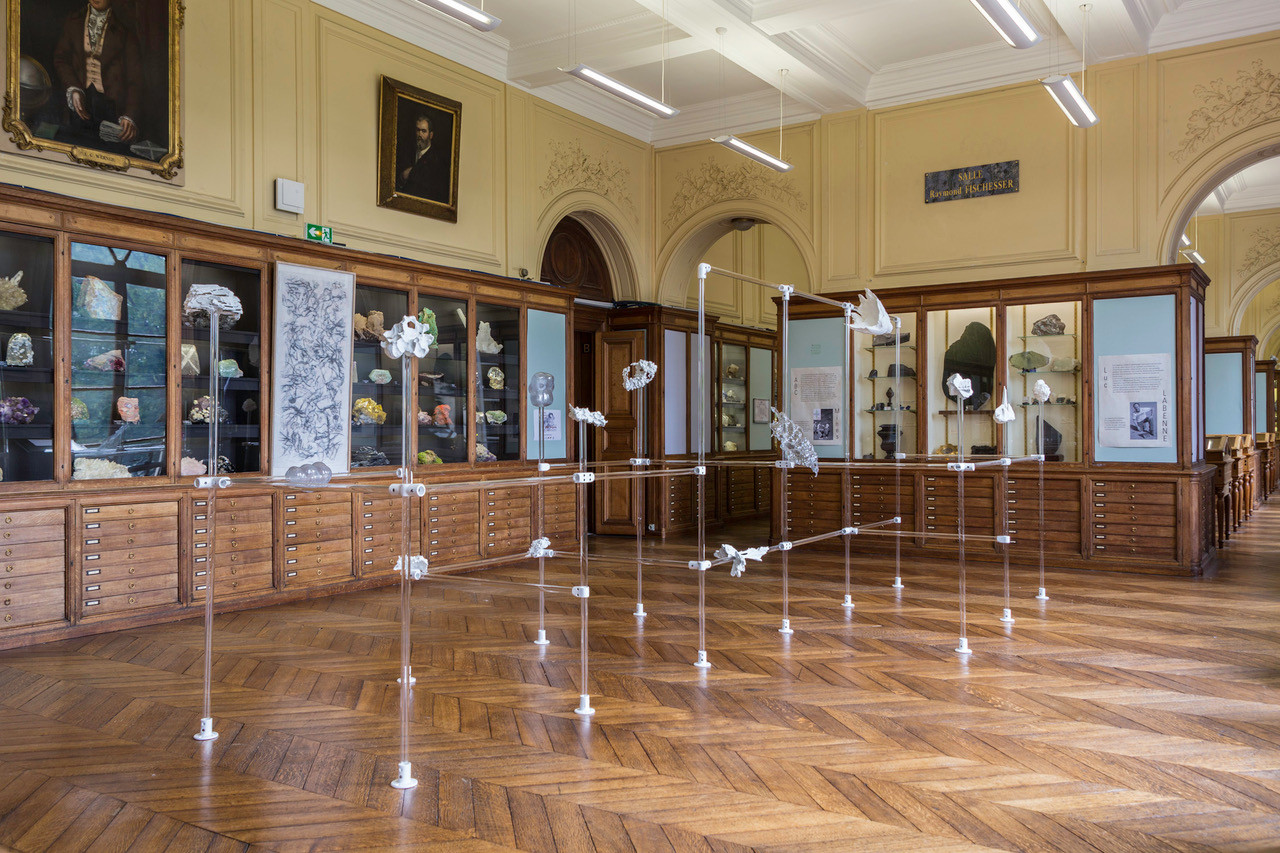
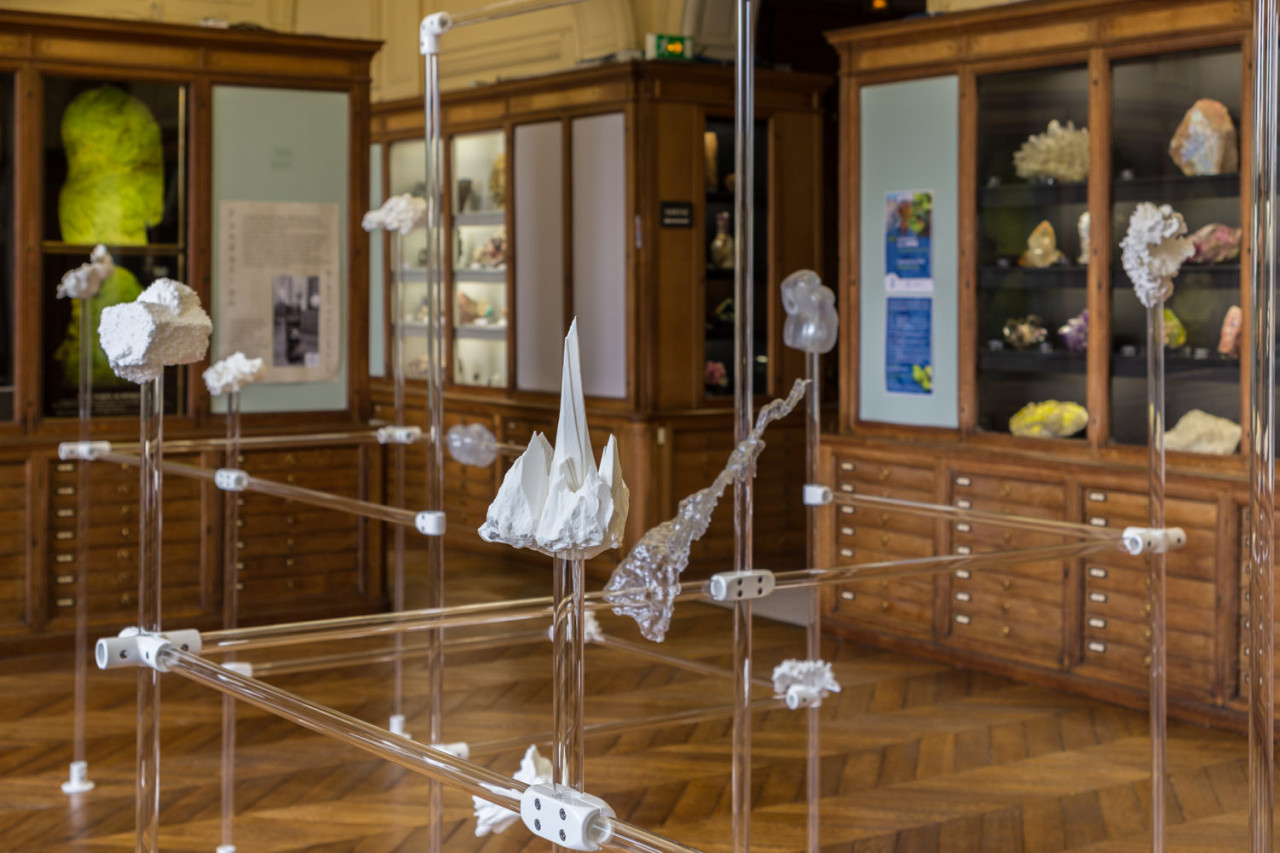
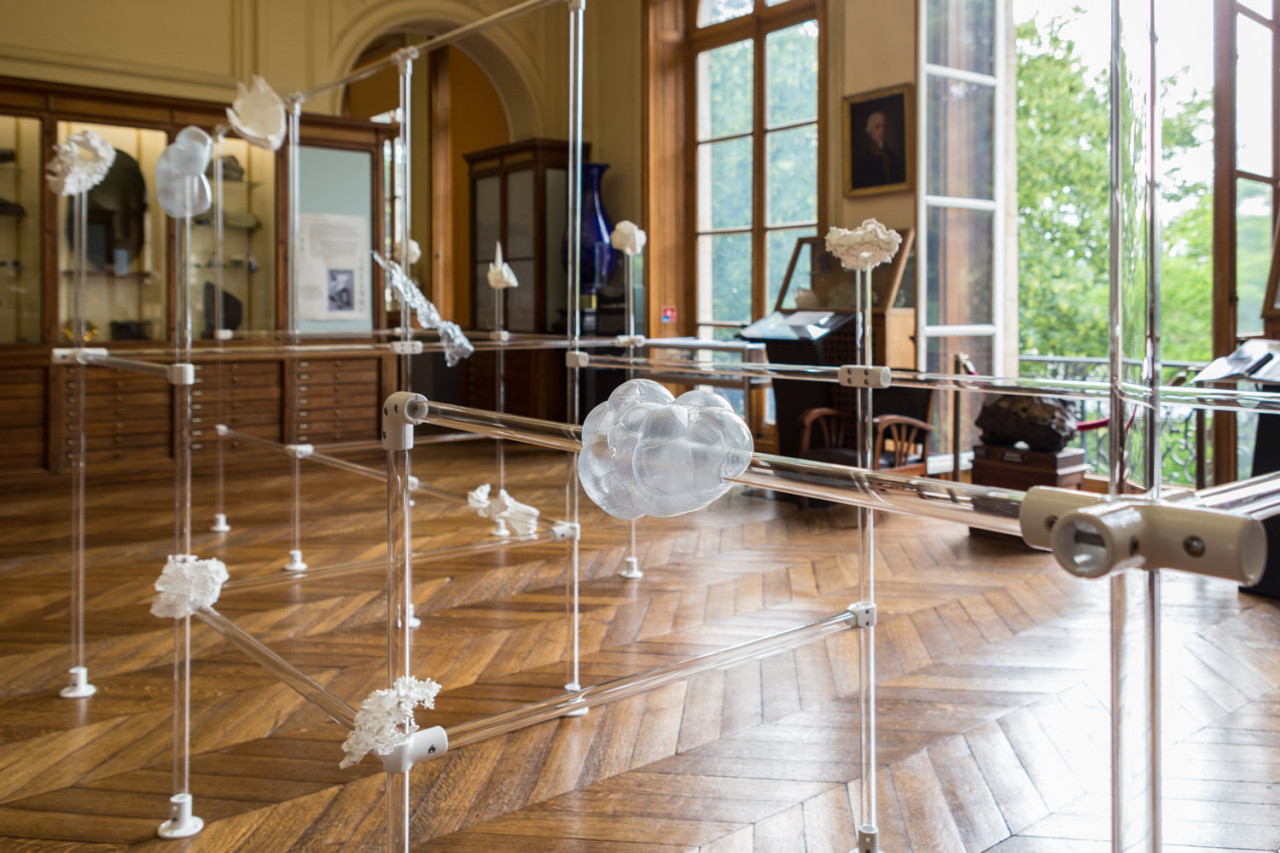
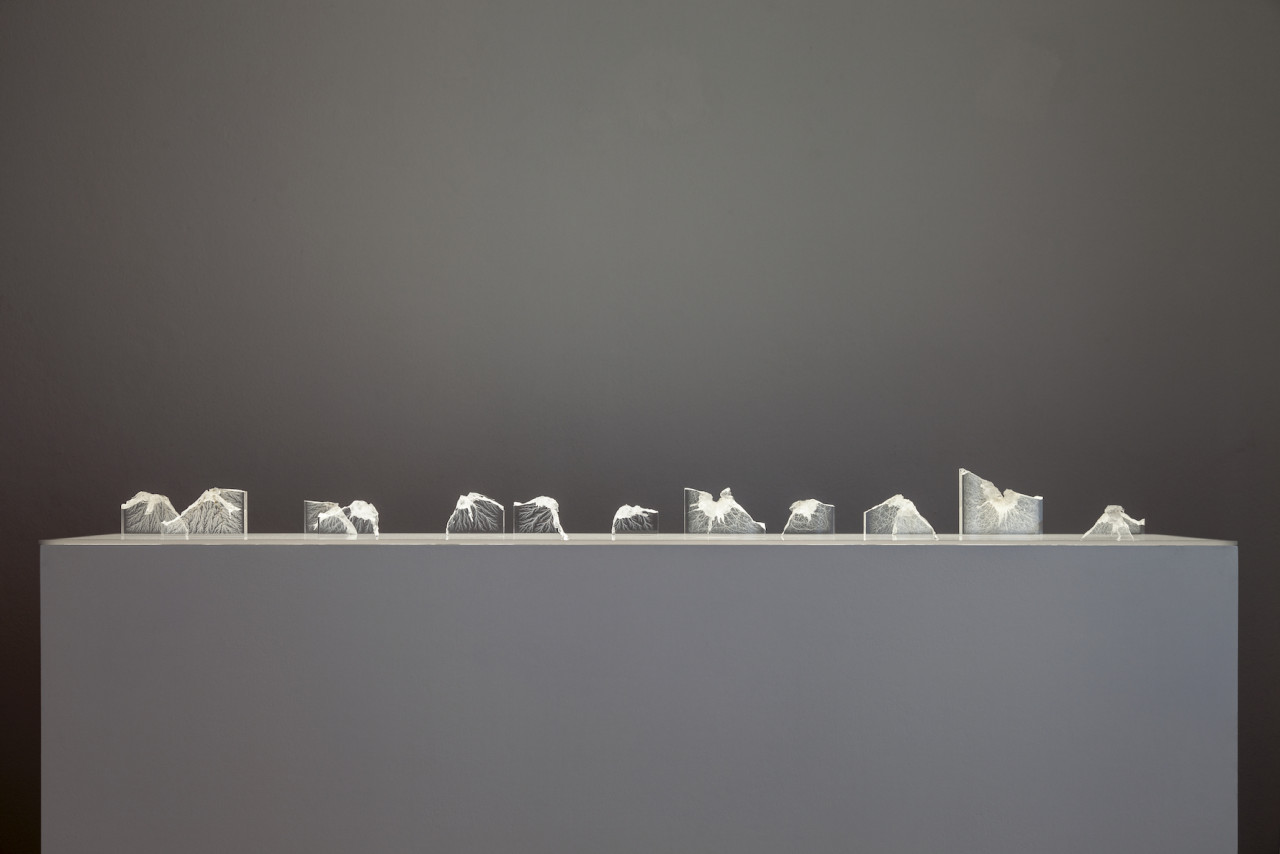
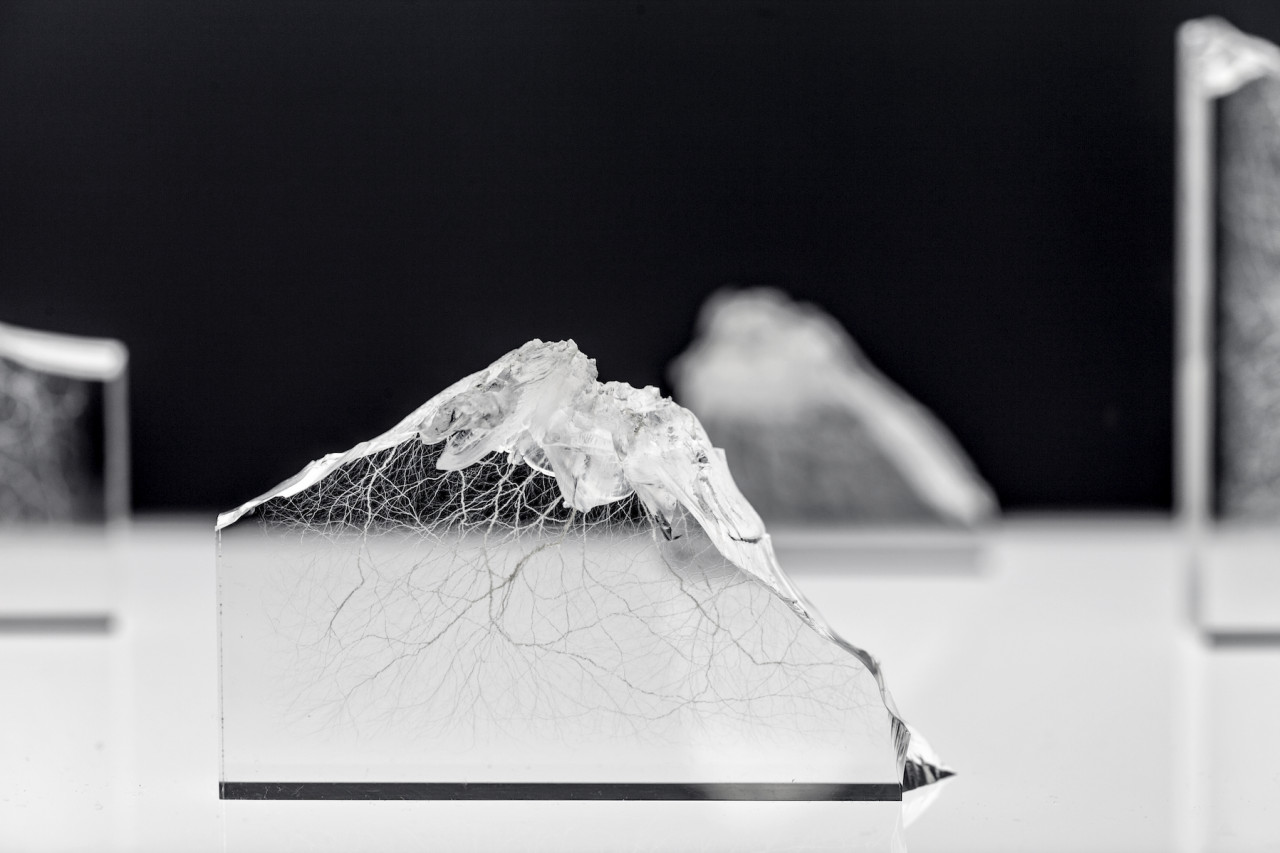


Alan Bogana
Boganium, handwavium et les autres, 2018
Installation, impressions 3d, plexiglas, acier
Dimensions variables
Photo © Musée de Minéralogie Mines ParisTech – Paris